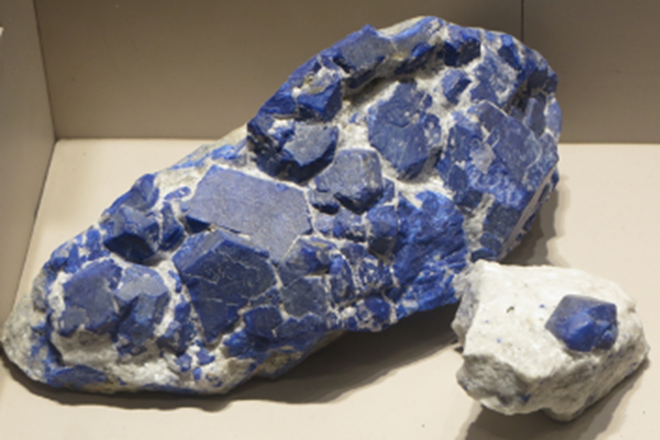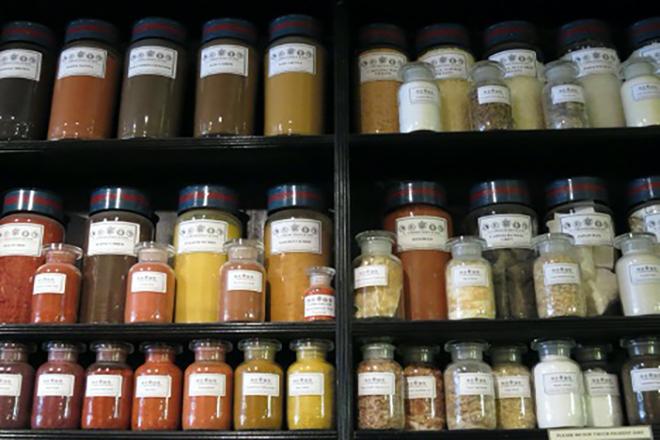Lapis Lazuli

Credit: Lapis Lazuli by Heather McCune Bruhn, Penn State University, licensed under CC BY-NC-SA 4.0
Resource Description
Lapis lazuli is a bright blue semiprecious stone, first known only in remote mountains in Afghanistan and Pakistan, and more recently in Brazil. This module explores lapis lazuli's use first in the production of high status objects in the Ancient world (Ancient Near East, Rome, etc.) and then its use as an expensive blue paint pigment. Since the process for extracting ultramarine blue pigment from lapis lazuli is so long and labor intensive, true ultramarine is still one of the most expensive pigments in the world. You will be able to read about and watch videos detailing the ultramarine extraction process, as well as the production and use of some alternatives to ultramarine blue.
Learn moreOchre

Credit: Ochre pigments and paint additives and resins at Cornelison and Sons, London by Heather C. McCune Bruhn, 2014., licensed under CC BY-NC-SA 4.0
Resource Description
Ochre, which is essentially rust (iron oxide), is humankind's first pigment, and one of the most plentiful sources of color on earth. Ranging from red to orange, yellow, brown and even violet depending on trace minerals and moisture levels, it is extremely stable and fairly non-reactive. It can be prepared very easily (colored rocks and soil can be crushed, washed, and mixed with a binder to make paint), and was first used by humankind around 100,000 years ago. It is still in use today. This module introduces ochre pigment and explores its use in three case studies: Blombos Cave in South Africa, in Italian Renaissance frescoes, and in environmental cleanup.
Learn more